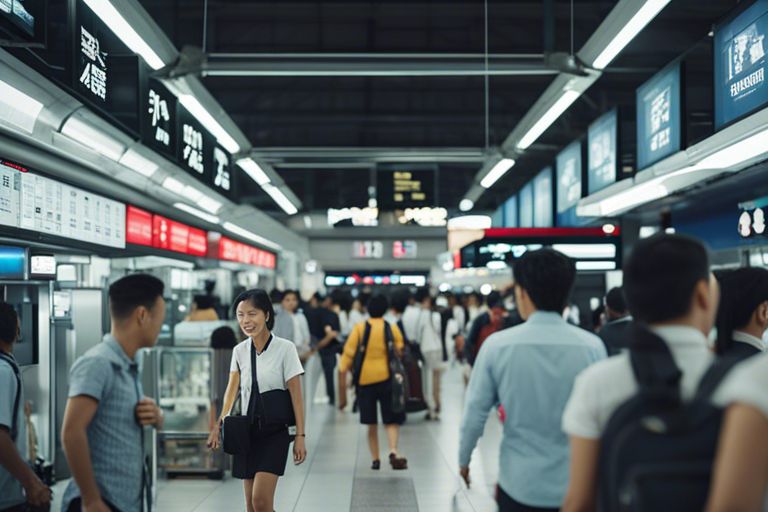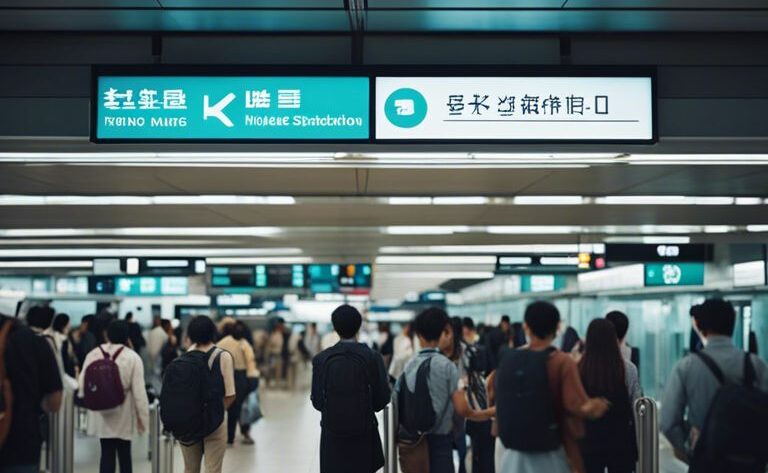There’s no denying that navigating train stations in Asia can be an overwhelming experience for travelers, especially those who are not familiar with the local systems and customs. To help you breeze through these bustling hubs like a seasoned pro, we’ve compiled expert tips to ensure a smooth and stress-free journey. From understanding the signage and announcements to navigating ticket counters and platforms, these important strategies will equip you with the knowledge and confidence needed to tackle any train station in Asia like a champion.
Preparing for Your Journey
Understanding Local Train Systems: Key Factors
Before begining on your train journey in Asia, it is necessary to familiarize yourself with the local train systems to ensure a smooth travel experience. Key factors to consider include operating hours, ticketing systems, platform etiquette, and train schedules. Understanding these elements will help you navigate train stations with ease and convenience, making your commute stress-free. Recognizing these details will empower you to make informed decisions and avoid potential pitfalls during your journey.
Purchasing Tickets: Tips for Convenience and Savings
Local transportation in Asia can be hectic, especially during peak hours. In the matter of purchasing tickets, opt for online platforms or self-service kiosks to avoid long queues at the station. Take note of any discounts, promotions, or combo deals that can help you save money on your fare. Assume that buying tickets in advance will not only save you time but also ensure you secure a seat on high-demand routes. Recognizing these money-saving opportunities will enhance your travel experience and make your journey more enjoyable.
Arrival at the Station
How to Read Train Schedules and Station Signs
Now that you have arrived at the train station in Asia, the first step is to familiarize yourself with how to read train schedules and station signs. The train schedules will often be displayed in local language characters, so it’s beneficial to have a translation app handy. Look for your train number, departure time, platform number, and any other relevant information. Station signs will guide you to ticket counters, platforms, restrooms, and other facilities. Take a moment to understand the layout to avoid any confusion.
Strategies for Efficient Station Navigation
Read the station map or directory to plan your route. Identify key landmarks or symbols that will help you navigate the station efficiently. Pay attention to signs that indicate directions to different platforms or areas of the station. Follow the flow of foot traffic and observe how locals move through the station. Be mindful of your surroundings and keep your belongings secure as stations can be crowded.
Strategies for Efficient Station Navigation: While navigating Asian train stations, staying alert and following the crowd can help you move swiftly through the bustling environment. Look out for signs that guide you to your desired platform or facility, and always keep an eye on your belongings to ensure a smooth journey.
On the Platform
Boarding the Train: How to Locate Your Car and Seat Smoothly
Despite the hustle and bustle of train stations in Asia, boarding the train can be a seamless process if you know where to go. When on the platform, look for signage that indicates the train number, car allocation, and seating arrangement. This information is usually displayed in multiple languages for the convenience of travelers. Platforms can get crowded, so it is advisable to stand in a strategic location that allows you to board your designated car easily when the train arrives.
Safety and Etiquette Tips While Waiting for and Boarding the Train
Safety and etiquette are paramount while waiting for and boarding trains in Asia. Be mindful of your surroundings and keep a close eye on your belongings at all times. Avoid standing too close to the edge of the platform to steer clear of any accidents. The train staff will usually announce the arrival of the train, so be prepared to board in an orderly fashion. The platform can get chaotic, but maintaining a calm demeanor and following instructions will ensure a smooth boarding process.
Safety
- Keep an eye on your belongings at all times.
- Avoid standing too close to the platform edge.
It’s important to adhere to safety precautions while navigating the busy train stations in Asia. The risk of losing belongings or facing accidents on the platform is prevalent, so always stay alert and cautious around the bustling crowds. Train staff are there to assist and ensure a safe boarding process, so heed their instructions and be mindful of your fellow passengers.

During and After the Ride
Making Connections: How to Transfer Between Trains Without Getting Lost
All travelers know the anxiety of making connections between trains in a busy station. To ensure a smooth transition, pay attention to signage, ask station staff for help, and familiarize yourself with the station layout beforehand. Stay calm and allow plenty of time between connections to avoid unnecessary stress.
Exiting the Station: Pro Tips to Quickly Find Your Way Out
Even the most seasoned travelers can get disoriented when exiting a train station in a foreign country. Thou bears the importance of staying alert, following signs for the nearest exit, and keeping your belongings secure. Avoid distractions and take note of landmarks to easily find your way out.
- Stay alert and follow exit signs.
- Keep your belongings secure at all times.
- Take note of landmarks to help orient yourself.
Between figuring out which exit to take and navigating through crowds, exiting a train station can be a challenge. Thou it may be tempting to follow the crowd, take a moment to assess your surroundings and choose the best route based on your destination. Keeping a confident demeanor and staying aware of your surroundings will help you navigate the hustle and bustle of a busy station with ease.




